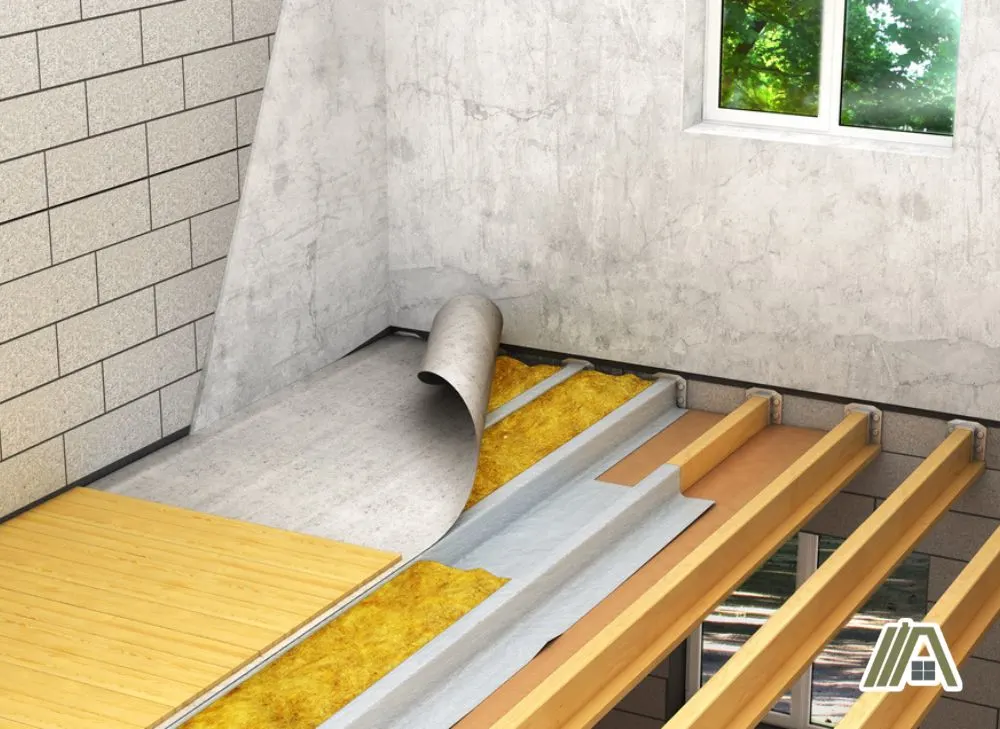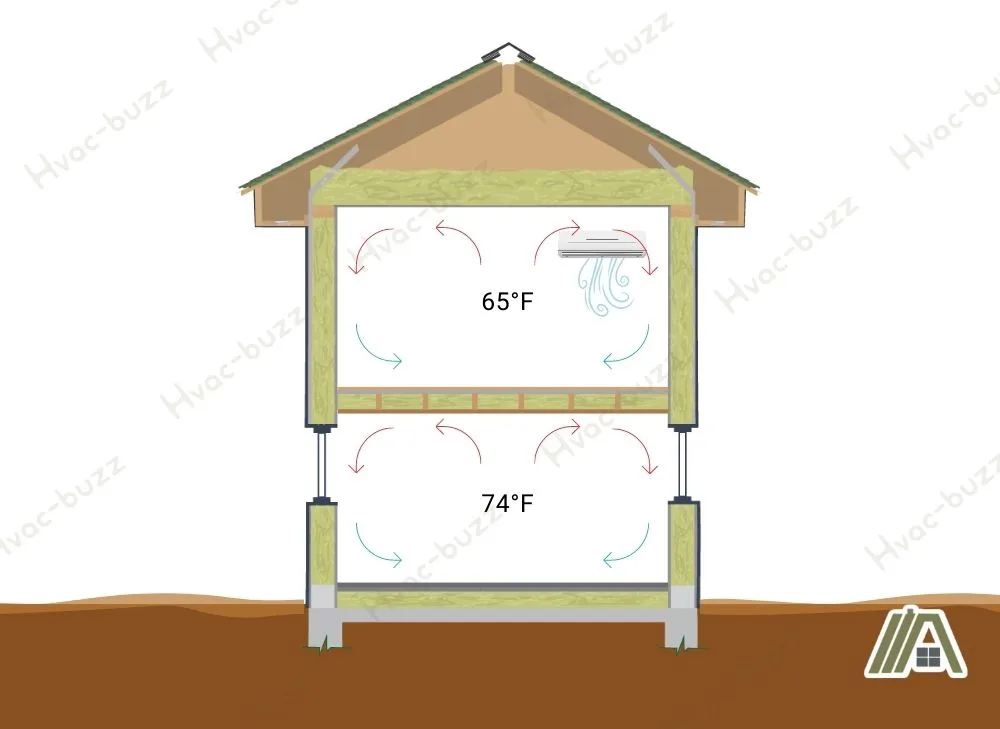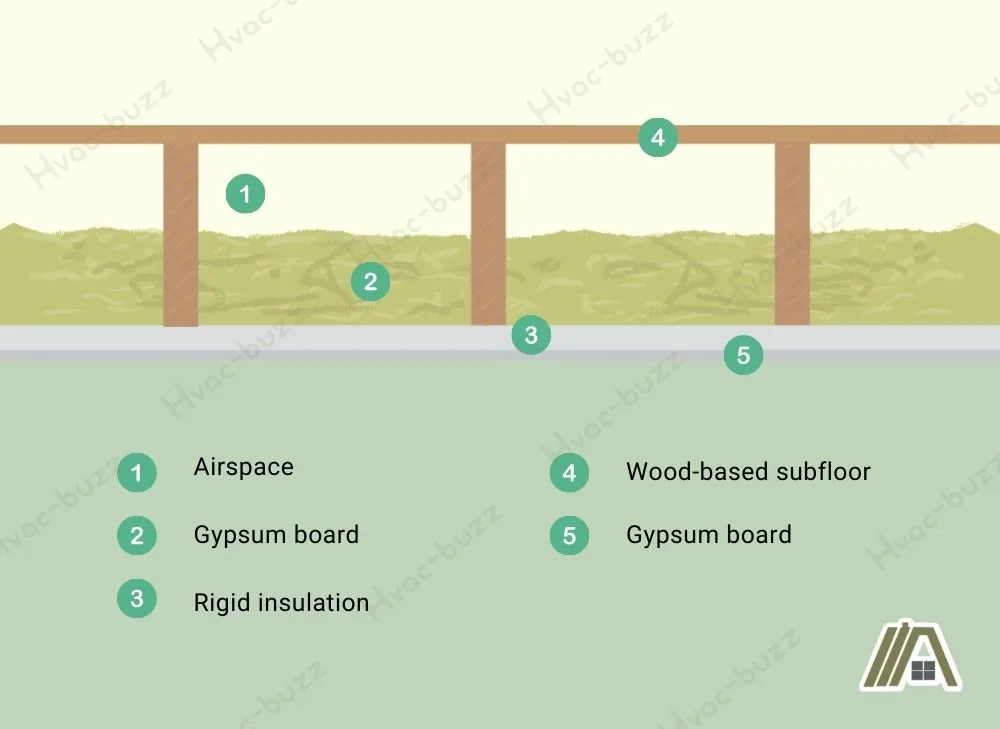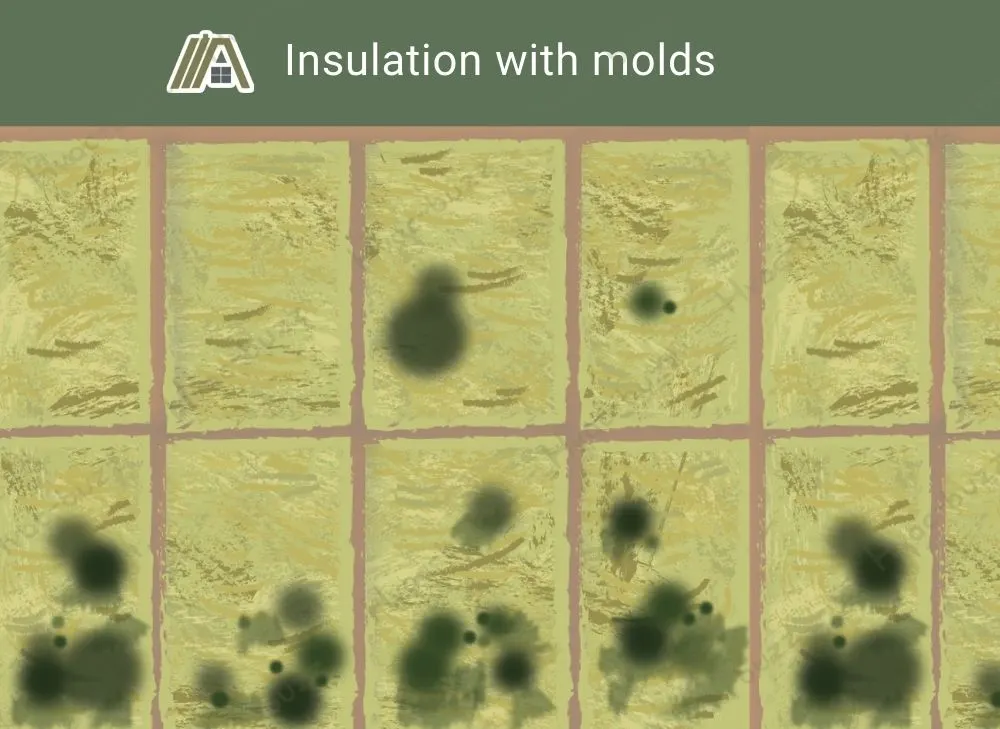Insulation can provide numerous benefits, from improved energy efficiency to better soundproofing. But it can also be expensive and time-consuming to install, and it may not always be necessary depending on the specific layout and use of the space.
When building or renovating a multi-story home, one of the decisions that homeowners and contractors must make is whether to install insulation between floors. To help you reach the correct decision, there are two things to consider: is it mandatory, and what are the reasons in favor of this installation?

Insulation between floors within the thermal envelope isn’t required, but it is mandatory in floors between living and unconditioned spaces. Insulating between floors helps regulate temperature, protect against unwanted airflow, reduce sound transfer, save energy, control moisture, and slow fire spread.
Is It Mandatory to Insulate Between Floors?
The International Residential Code (IRC), which is the applicable code for most residential homes, does not mandate insulation between floors that are complete within the thermal envelope.
However, it does talk about floor insulation between living and unconditioned spaces (Section N1102.2.7).

This is supported by governmental energy authorities.
Some states and local jurisdictions may have their own building codes or energy efficiency programs that require or incentivize the use of insulation in floors.
On the other hand, there are also other states, like Texas, that don’t even mandate wall insulation and very low ceiling insulation requirements.
It’s important to consult with local building codes and professionals to determine the insulation requirements and recommendations for a particular building project.
You will likely need to apply for the installation of the insulation, and this will include a description of what is mandatory.
Reasons You Should Insulate Between Floors
1. Helps to Regulate Temperatures of Upper Floors
One of the key benefits of installing insulation between floors is that it can help to regulate the temperatures of upper floors in a multi-story home or building.
This is because heat rises, and without proper insulation, much of the warmth generated on lower floors can escape through the ceiling and into the upper levels of the building.
This can result in uneven heating, with upper floors being much warmer or cooler than lower floors, and can lead to increased energy costs and discomfort for residents.
By installing insulation between floors, however, you can create a barrier that helps to trap heat within each individual level of the building. Each floor can maintain its own temperature and climate without relying on the heat generated by lower floors.

This not only ensures greater comfort and convenience for residents but can also lead to significant energy savings over time as less heat is lost and less energy is required to maintain a comfortable indoor temperature.
2. Protects Home From Uninsulated Areas
Insulating your home from uninsulated areas, such as the basement or crawl space, is an important step in protecting your home from outside elements.
Without proper insulation, cold air and moisture can easily penetrate your home through these areas, leading to a host of issues such as mold, mildew, and even structural damage.
By installing insulation between these areas, you can create a strong envelope around your home that helps to prevent unwanted air infiltration and protect against moisture.
This is particularly important in areas with harsh winter climates, where cold air and snow can easily penetrate the home’s exterior and cause significant damage.
Not only does insulation protect your home from the outside elements, but it can also help to improve indoor air quality and reduce energy costs.
By sealing off these uninsulated areas, you can prevent drafts and reduce the amount of energy needed to heat and cool your home, which can ultimately save you money on your utility bills.
The lack of insulation in these floors is also going to be a code violation, which can lead to fines and additional costs to correct the problem.
3. Insulation Can Reduce Sound Transfer
Insulation can play an important role in reducing sound transfer between floors. Sound transfer can be a major issue in multi-story buildings, as noise from one floor can easily travel to another, leading to disturbances and potential conflicts between family members or neighbors.
Installing insulation between floors can significantly reduce sound transfer and create a more peaceful living environment.

There are a few different types of insulation that are effective for reducing sound transfer.
One common option is fiberglass insulation, which can be installed in between floor joists to create a barrier against sound waves.
Another option is blown-in insulation, which is made of loose fibers that can be installed in hard-to-reach areas.
However, cellulose seems to be the most effective again sound.
In addition to improving the overall comfort of your living space, reducing sound transfer can also increase the value of your home. Buyers are often willing to pay a premium for properties with good sound insulation, as it can make a significant difference in the quality of day-to-day life.
4. Saves Energy
Insulating between floors can also help to save energy by reducing the amount of heat that is lost through the floors.
Without proper insulation, heat can escape through the floors, leading to higher energy bills and a less comfortable home.
By insulating between floors, you can create a more energy-efficient home that is easier to heat and cool.
An estimated 10-20% of a home’s energy is lost through the floors if they are not properly insulated. This means that by adding insulation between floors, you can significantly reduce your energy bills and carbon footprint.
5. Can Mitigate Moisture Damage/Mold Growth
Insulating between floors is not just effective for regulating temperatures and reducing sound transfer. It also plays a vital role in mitigating moisture damage and mold growth.

This is more for the floors between conditioned and unconditioned spaces but can also be applicable for floors within the thermal envelope, especially those above or below laundries or bathrooms.
Moisture is one of the most significant threats to the longevity and health of any home.
Water can seep through floors from a variety of sources, such as plumbing leaks, condensation, or even floods, leading to damage to the structure, foundation, and insulation.
Moisture can also cause the growth of mold and mildew, which can spread quickly and pose significant health risks to occupants. Fortunately, insulating between floors can help to mitigate these issues.
Water can’t get past the insulation vapor barrier, which prevents it from reaching the upper floors. But, since the vapor barrier is always on the face side, it can also prevent moisture from getting into the spaces between the floors where supporting beams are.
6. Helps Prevent/Delay the Spread of Fires and Smoke
Insulation can play an important role in helping to prevent or delay the spread of fires and smoke between floors.
When a fire occurs, the heat can easily transfer through uninsulated floors and into other parts of the building, accelerating the spread of flames and smoke.
Insulation can act as a barrier that slows down the transfer of heat and flames, giving occupants more time to evacuate and firefighters more time to respond.
In addition to slowing down the spread of heat, insulation can also help to prevent the spread of smoke between floors. Smoke inhalation can be just as deadly as the fire itself, and can quickly fill a building, making it difficult for occupants to see and breathe.
Insulation can help to seal gaps and prevent smoke from penetrating into other areas of the building, providing additional time for occupants to evacuate safely.
It is important to note that not all insulation materials provide the same level of fire resistance. Some materials, such as mineral wool (amazon link) and fiberglass, are naturally non-combustible and can withstand high temperatures.
Others, such as foam insulation, may require additional fire-retardant treatments to meet building code requirements.
Therefore, it is crucial to choose the appropriate insulation material and installation method to ensure maximum fire safety.
Sources
https://www.edfenergy.com/heating/advice/complete-guide-floor-insulation
https://codes.iccsafe.org/content/iecc2018/chapter-4-re-residential-energy-efficiency

